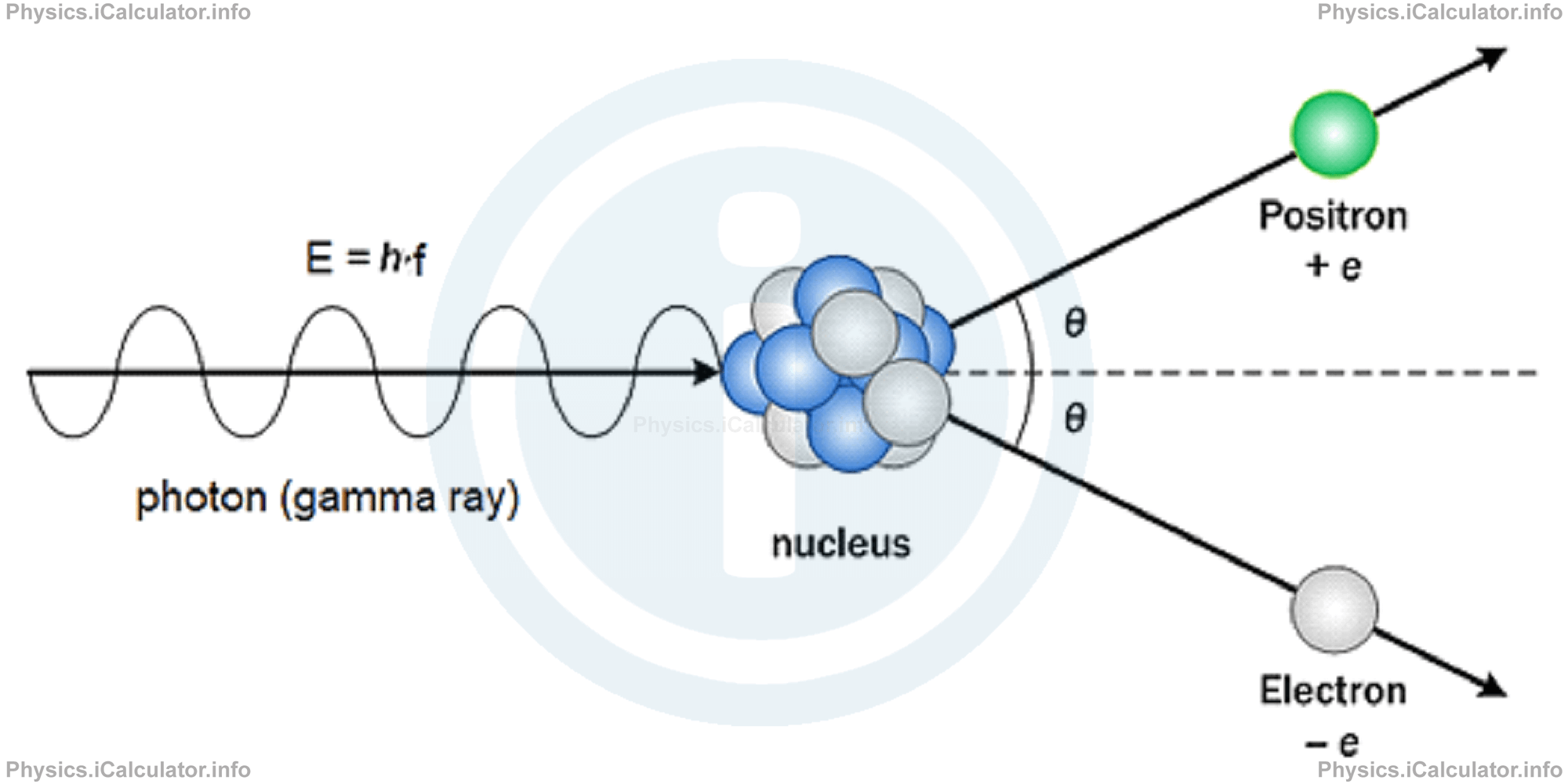Menu
Physics Lesson 21.1.3 - Electron-Positron Pair
Please provide a rating, it takes seconds and helps us to keep this resource free for all to use
Welcome to our Physics lesson on Electron-Positron Pair, this is the third lesson of our suite of physics lessons covering the topic of Elementary Particles, you can find links to the other lessons within this tutorial and access additional physics learning resources below this lesson.
Electron-Positron Pair
Positron does not exist in the structure of common matter; the electron-positron pair appears only during the collision with matter of charged particles or high-energy gamma rays. This process is known as "pair production". It must be noted here that pair production is not an exclusive process of electron-positron only; it applies in all matter-antimatter pairs of elementary particles. During this process, electric charge must be conserved and an amount of energy E = 2 me · c2 sufficient to overcome the rest energy of the two particles. Hence, the minimum energy needed for pair production process must be
= 2 ∙ (9.1 × 10-31 kg) ∙ (3 × 108 m/s)2
= 1.64 × 10-13 J
The process of pair production is shown in the figure below.

Schematically, the process of electron-positron pair production is written as:
The reverse process may also occur. Thus, when an electron enters in contact with a positron, a gamma particle is produced. More specifically, if a positron encounters an electron on its way, this electron-positron pair is transformed into a pair of gamma quants according the reaction
The energy of this pair of gamma quants is not less than 2 me · c2, This radiation propagates in opposite direction to the movement of original particles. Thus, when a particle and an antiparticle collide with each other, they are annihilated, emitting energy. This process is (not so rightfully) called "pair annihilation".
The above fact is a demonstration that besides the mutual transformation of particles from matter to matter (i.e. within the family of material objects), a matter to energy or vice-versa transformation is also possible. More specifically, matter is transformed in EM (gamma) radiation and vice-versa.
We can find identify the positron as elementary particle during the explosion of unstable particles as well. A nucleus that contains too many neutrons emit an electron e- during a beta minus decay to become more stable. In this way, a neutron converts to proton, increasing the atomic number Z by 1 while the number of neutrons N decreases by 1. On the other hand, if an atomic nucleus is abundant in protons but lacks the sufficient number of neutrons to be stable, releases a positron e+, transforming in this way a proton into neutron. Such nuclei cannot be found in nature but they can be produced artificially in nuclear reactors.
Example 1
Calculate the rest mass of positron in MeV/c2 if the minimum energy needed to produce a positron is 1.02 MeV.
Solution 1
From theory, we know that electron and positron have the same rest mass denoted by me and the minimum energy needed for the electron-positron pair to produce is given by
Rearranging to isolate me, we obtain for the rest mass of positron:
= 1.02 MeV/2 ∙ c2
= 0.51 MeV/c2
You have reached the end of Physics lesson 21.1.3 Electron-Positron Pair. There are 4 lessons in this physics tutorial covering Elementary Particles, you can access all the lessons from this tutorial below.
More Elementary Particles Lessons and Learning Resources
Whats next?
Enjoy the "Electron-Positron Pair" physics lesson? People who liked the "Elementary Particles lesson found the following resources useful:
- Electron Positron Feedback. Helps other - Leave a rating for this electron positron (see below)
- Elementary Particles Physics tutorial: Elementary Particles. Read the Elementary Particles physics tutorial and build your physics knowledge of Elementary Particles
- Elementary Particles Revision Notes: Elementary Particles. Print the notes so you can revise the key points covered in the physics tutorial for Elementary Particles
- Elementary Particles Practice Questions: Elementary Particles. Test and improve your knowledge of Elementary Particles with example questins and answers
- Check your calculations for Elementary Particles questions with our excellent Elementary Particles calculators which contain full equations and calculations clearly displayed line by line. See the Elementary Particles Calculators by iCalculator™ below.
- Continuing learning elementary particles - read our next physics tutorial: Particles and Antiparticles - Interaction and Laws of Conservation
Help others Learning Physics just like you
Please provide a rating, it takes seconds and helps us to keep this resource free for all to use
We hope you found this Physics lesson "Elementary Particles" useful. If you did it would be great if you could spare the time to rate this physics lesson (simply click on the number of stars that match your assessment of this physics learning aide) and/or share on social media, this helps us identify popular tutorials and calculators and expand our free learning resources to support our users around the world have free access to expand their knowledge of physics and other disciplines.